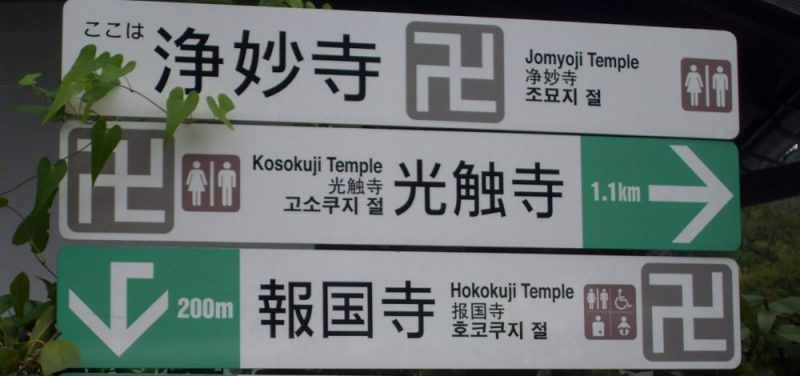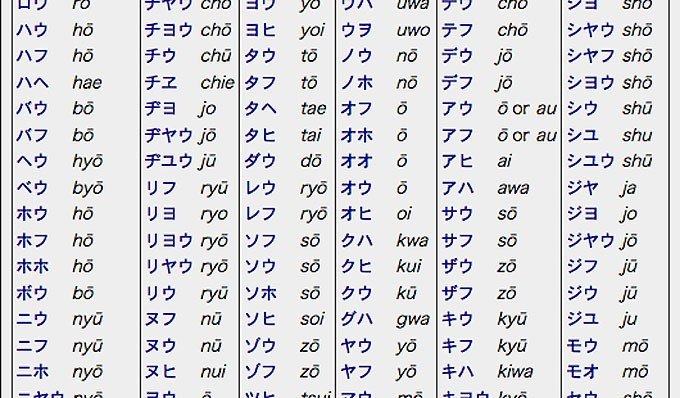Today we will talk a little about romaji, which is a writing system used to transcribe the reading of Japanese words into the Roman/Latin alphabet, allowing reading for people who do not know Japanese.
Romaji (ローマ字) literally means “Roman letter”, so we call the transliteration of the Japanese language. This romanization is present where there are messages intended for foreigners, as in street signs, in passports, in dictionaries and in textbooks for students of the language.
Interestingly the word Romaji can be written in different ways, as there are different types of romanization of the Japanese language. You can find roumaji, romaji, ro-maji or rōmaji (with accent). There is no right or wrong!

Table of Content
The Origin of Japanese Romanization - Romaji
The first romanization originated from the spelling of the Portuguese language and was created in 1548 by a Catholic named Yajiro. This system was created so that missionaries could preach and teach without having to learn to read Japanese. There is a great resemblance between the Japanese syllables and the syllables in Portuguese, greatly facilitating this work.
During the Meiji era, some Japanese scholars tried to abolish the Japanese writing system and use only rōmaji. Several Japanese texts were published entirely in rōmaji, but the idea soon died, probably due to the numerous words with the same pronunciations or only 1 syllable. Kanji is a item that is very necessary in Japanese and can never be left unused.
Rōmaji makes life easier for many who don't understand Japanese. Let's see the example of a romanized sentence:
Responsive Table: Scroll the table to the side with your finger >>
| Japanese | 俺の妹がこんなに可愛いわけがない |
| Translation | There's no way my sister could be this cute. |
| Roumaji | Pray no imouto ga konnani kawaii wake ga nai |
| Rōmaji | Pray no imōto ga konnani kawaii wake ga nai |
As you may have noticed, there are 2 different ways to write "rōmaji" or "roumaji", both are correct, it all depends on the type or system of romanization you use. The romanization system can use either a vowel, a macron, or an accent to romanize long vowels. Let's get to know some types of Rōmaji.
DIFFERENT TYPES OF ROMAJI - ROMANIZATION
Throughout Japanese history, several versions of romanization were created, among them:
Hepburn System (ヘボン式 / hebon-shiki) - The Hepburn system was created by James Curtis Hepburn (1815-1911). An American missionary from Philadelphia, who arrived in Japan in 1859 and compiled the first Japanese-English dictionary. The Hepburn system is now the most widely used romanization system.
Kunrei System (訓令式 / kunreishiki) - The Kunrei system was enacted by the Japanese government during the 1930s. A revised version was issued in 1954. See below for differences between the Kuntei and Hepburn romanizations:
Responsive Table: Scroll the table to the side with your finger >>
| Hepburn | si, you, hu, zi, sya, syu, syo, tya, tyu, ty, zya, zyu, zyo |
| Kunrei | shi, chi, tsu, fu, ji, sha, shu, sho, cha, chu, cho, ja, ju, jo |
JSL - JSL is a romanization system based on Japanese phonetics. It is written as heard and has no accents or dashes. The difference with Hepburn is that JSL uses vowels instead of accents to represent long vowels.
Long vowels are pronounced by lengthening the vowel. Words like 東京 (Tokyo) and ローマ字 (rōmaji) have long vowels, see how they are romanized in each system:

Responsive Table: Scroll the table to the side with your finger >>
| JSL | ooo or | toukyou or tookyoo | ro-maji |
| Hepburn | ā, ē, ī, ō, ū | tōkyō | rōmaji |
| Kunrei | â, ê, î, ô, û | tokyo | rômazi |
Nihon-shiki (日本式 / nipponshiki) - It is a little used system, and it was created by Tanakadate Aikitsu in 1881.
Responsive Table: Scroll the table to the side with your finger >>
| Nihon | da, di, du, de, do, dya, dyu, dyo |
| Kunrei | da, zi, zu, de, do, zya, zyu, zyo |
| Hepburn | da, ji, zu, de, do, ja, ju, jo |
Is it worth using romanization to study Japanese?
The romanization of the Japanese language can be more of a hindrance than a help. Starting with the fact that there are different types of romaji, causing people to even get into arguments about the right way to write.
Other modifications occur when romanizing a word or person's name of foreign origin, words that have the "L" but are written in Japanese with "R" can be easily romanized with "l".
Many question why the Japanese do not use only romaji. The main reason is the words homonyms and homophones, there are thousands of them in Japanese. How will you know which kami [紙,神,髪] is "paper" since there are several words with the same writing and pronunciation?

Constant use of rōmaji will only hinder your learning. If you already know hiragana and katakana, stay away from rōmaji as much as possible. If you need to convert a text to rōmaji, just paste it into Google translator or some converter.
If you've already mastered the basics of the Japanese language like hiragana and katakana, we strongly encourage you to stay away from romanization. However, for those who have not yet immersed themselves in the Japanese language, our Roman letters have advantages, one of which is their ease of reading and the space between words that does not exist in standard Japanese.
With Romaji you can easily learn basic things like:
- Asking basic everyday questions;
- Compliments;
- To learn and sing Japanese songs;
- The numbers
- The hours, the days, and months;
- Shopping;
- Ask for directions;
- To stay in a hotel;
- Share with people who do not speak Japanese;
- Among others..;
It is necessary to use romanization to learn hiragana and katakana from scratch.
There are problems and difficulties in studying using only romanization in the long term. Some of these problems are:
- Very similar words;
- Lack of different sounds in Japanese;
- Words written in kanji;
- Words written with only one syllable or phoneme;
- Different types of romaji;
- Lack of romanized material;
In addition to Romaji, there is another aid for those who have already learned hiragana and katakana called Furigana. We recommend reading the article about furigana by clicking here.
Videos about Romaji
Finally, we will leave some videos about romanization below that can help you understand more about the subject. Starting with a video made by the sensei from our Japanese course at Suki Desu and then by Luiz Rafael who is another Sensei that I respect a lot, I share and follow with pleasure.
